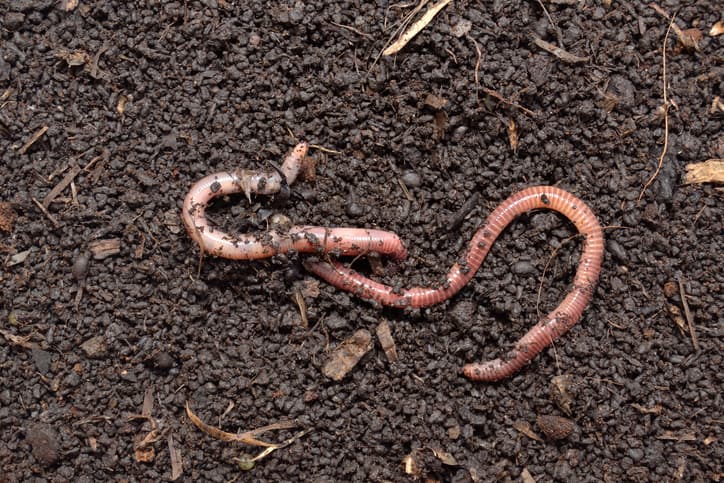Contents:
- Medical Video: This is What Happens When You Put Earthworm in Your garden soil
- Benefits of earthworms for the human body
- 1. Immunological identifier
- 2. Fibrinolytics
- 3. Antitumor
- 4. Antipyretics and antioxidants
- 5. Antibacterial
- 6. Wound healer
Medical Video: This is What Happens When You Put Earthworm in Your garden soil
Earthworms have long been used as a form of nutrition. Sun et al (1997), found that earthworms contain 78-79 grams per liter of amino acid, and contain high concentrations of important vitamins and minerals, such as iron and calcium. Furthermore, Paoletto et al (2003) investigated the diet of the Amerindian Amazonas in Venezuela. They found that these people used leaves and garbage-eating invertebrates, as the main source of protein, fat, and essential vitamins.
Claire Louise stated in eHow.com that earthworms can be a nutritional supplement for the human diet, because of the high level of protein in the body, which is around 60-70 percent protein. Their bodies also contain very little fat and are also easy to cook because they don't have bones. To find out more about the benefits of earthworms for humans, let's look below.
Benefits of earthworms for the human body
The use of these invertebrate animals as traditional treatments for various diseases, has been used in China for a long time. Research on the pharmaceutical effects of earthworms has begun along with the development of biochemical technology. Many bioactive molecules that can be considered as drugs have been detected in the body of the worm. These molecules show a variety of activities, such as the introduction of immunology, fibrinolytic, anticoagulative, anticancer, and antimicrobial, and thus earthworms can function to treat various diseases.
1. Immunological identifier
This animal is one of the first organisms in evolution that has immunological and memory recognition. Earthworms, such as other complex invertebrates produce several types of leukocytes, and synthesize and secrete various immunoprotective molecules. They have innate immunity, including some functions associated with adaptive immunity (rejection of allogeneic tissue). Ceomocytes which is involved in innate immunity, plays a central role in the immune system of earthworms.
2. Fibrinolytics
A powerful and safe fibrinolytic enzyme, has been purified and studied from several species of earthworms, including Lumbricus rubellas and Eisenia fetida. The effects of therapy and prevention of diseases associated with thrombosis have been confirmed clinically. The potential use of fibrinolytic enzymes in the prevention and treatment of serious heart and cerebro-vascular disease has attracted the attention of medicine and pharmacology.
3. Antitumor
The antitumor effects of earthworms have been investigated in vitro and in vivo. It has been proven that EFE (earthworm fibrinolytic enzyme) which is isolated from E. fotida shows antitumor activity against human hepatoma cells. Hepatocellular carcinoma (HCC) is the fifth most common cancer and the third leading cause of cancer deaths worldwide. It seems that EFE induces apoptotic cells in these cells.
The results showed that EFE can be used in the treatment of hepatoma. In addition, a mixture of macromolecules from homogeneous E. foetida inhibits the growth of melanoma cells in vitro and in vivo.
4. Antipyretics and antioxidants
Antipyretic activity has also been detected in the worms of Lumbricus and Perichaeta species, as well as in lampito mauritii earthworm minerals. This activity is similar to what aspirin gets. The daro L. mauritii mineral also shows remarkable antipyretic and antioxidant action in the treatment of peptic ulcer in mice.
The protection of the human body against redikal free is very important, because it is connected with the progress of defense for many chronic diseases. Non-enzymatic antioxidants, such as glutathione, vitamins C and E, Tocopherol and Ceruloplasmin, protect cells from oxidative damage.
5. Antibacterial
During their 700 million years of existence, earthworms have evolved in environments full of microorganisms. Some of them threaten their existence. Therefore, they have developed an efficient mechanism for the attack of microorganisms. There are various relationships between earthworms and microbes, namely:
- Microbes are food for earthworms.
- Microbes are nutritional ingredients for growth and reproduction.
- Microbes are partly Gram positive bacteria.
- Pathogens are digested by earthworms and thus facilitate the multiplication of microbes in the intestine.
- Microbes are distributed to new places on the ground.
The molecules that maintain earthworms from microbes have been detected in selomic liquids from Lumbricus and Eisenia. Some reports also discuss anti-microbial agents originating from earthworm tissue.
6. Wound healer
Many scientists and medical groups have been looking for ways to improve wound care and help heal wounds. Wound healing on the skin is a complex process, characterized by epithelialization (growth of young skin cells that cover wounds) and restoration of connective tissue.
Minerals obtained from the worm species L. mauritii can act as anti-inflammatory, antioxidant, and hepatoprotective activity. Because of this, these worms can be considered in the treatment of wounds, including for various human compounds.
READ ALSO:
- Various Diseases That Can Be Transmitted by Pets
- Like to Torture Animals? You May Have Psychopathic Tendency
- Can Asthma Patients Have Pets?












